Greetings friends, I hope you are doing well! 😃
The Music
I've been all over the map in my music listening lately, from opera to funk, both which are well outside of my usual wheelhouse of jazz listening.
I find it's easy for me to get into an audiophile rut if I listen to the same ol' 'sonic spectacular' recordings too often, as it shifts my focus from listening to and enjoying music for its own sake, to focusing on the sound quality of recordings and audio equipment.
Don't get me wrong, I enjoy listening to the great recordings from the stereo period of the magnetic era of recording (1958 to 1975) as much as the next listener, as they can provide an amazing sort of 'you are there' or 'they are here' style of listening experience.
Even though we are well into the digital era of recording (1975 to today), there's a reason that stereo magnetic recording techniques are still popular with recording artists and recording engineers, as they can provide a remarkably musically natural, high-quality, and high-resolution document of a musical performance that will endure the test of time.
However, it turns out that recordings from the stereo period of the magnetic era of recording make up a relatively small fraction of our worldwide recorded music canon, so there is lots of fun to be had for listeners venturing out into other periods of the recording arts, like the monaural recordings of the acoustic (1877 to 1925), electric (1925 to 1945), and early magnetic (1945 to 1957) eras of the recording arts.
In truth, some of the greatest and most important musical performances found in our historic recorded music canon reside in those early periods of the recording arts, and I've found exploring them to be an illuminating and edifying experience.
I've found that my experiences of enjoying and listening to music have expanded over time, much like my own tastes in food and drink have expanded over time, from childhood to adulthood.
It's fairly common knowledge that food preferences change over time - from childhood to adulthood - due to a changing distribution of taste buds for sweet, sour, bitter, salty, and savory flavors, as well as the change over time of olfactory receptors for the many aromas associated with food and drink, and of course, due to the all-important influence of exposure to a variety of different foods as time goes on.
When it comes to our palate, exposure to food and drink that are new to us is a primary driver in expanding our epicurean sensibilities so that we enjoy a broader range of food and drink. Over time we tend to find new food and drink choices we enjoy so much that we add them to 'the menu' of our lives.
That's kind of what it has been like for me with music listening. When I was a youngster I enjoyed the popular music of that time (and still do), as that was what stimulated my 'aural taste buds' back then.
As time goes on, I have found that my music listening has expanded into a variety of musical styles and genres, from the early periods of the recording arts, to those of the present day. My music appreciation 'aural taste buds' distribution have changed, and I relish exploring music that is new to me.
When I first got involved in high-fidelity audio, my music listening shifted from the music I listened to for its own sake, towards the high-fidelity recordings of the stereo period of the magnetic recording era, as those were the recordings that were popular in the audiophile segment of our hobby due to their spectacular sound quality.
As my interest in the high-fidelity audio hobby continues to grow, I continue to experience shifts in my 'aural taste buds' as I listen to recordings from all the eras of the recording arts.
I'm learning how to hear 'more' as I listen to the great performances of music from the different recording eras, as I become more aware of the music of those eras, and the distinctive nature of the recording arts from those eras.
It certainly has been fun exploring new musical genres, and the four eras of the recording arts, which has also taught me a lot about the strengths and weakness of the various approaches to high-fidelity audio systems in being able to play all music.
Along the way I've learned some important audio system voicing principles that expands the musicality range of my high-fidelity audio and audio-visual systems to aid me in those explorations, opening up new worlds of music listening that I have come to immensely enjoy.
Jeff's Place is my blog where I share the various aspects of my ever evolving audio hobby with you, from do-it-yourself (DIY) projects, vintage audio, new production audio components, ideas about what I consider to be 'good' audio performance, and audio equipment commentary.
I've also been sharing my musical discoveries with you as I come across something interesting, older or new, and I've got some fun discoveries to share with you today.

Bel Canto, The Tenors of the 78 Era, from Naxos.
First up is the superb Naxos box set, Bel Canto, The Tenors of the 78 Era, which is "A documentary series about the great tenors and bel canto singing in the first half of the 20th century ..."

Bel Canto, The Tenors of the 78 Era, from Naxos.
To quote from the back of the box set:
"With the development of sound film in the 1920s and 30s, the treat tenors, such as Beniamino Gigli, Richard Tauber and Lauritz Melchior, became movie stars. Countless "singer movies" were made, but great vocal performances were also captured in documentaries and privately made movies. Using a wealth of rare restored material, this thirteen-part documentary series presents the great tenors from Enrico Caruso to Jussi Bjorling, and together with comprehensive essays, offers a deep and inspiring insight into the art of bel canto. Bel Canto, The Tenors of the 78 Era series was broadcast in thirty countries and awarded at the Columbus International Film Festival and at Classique en Images at the Louvre."
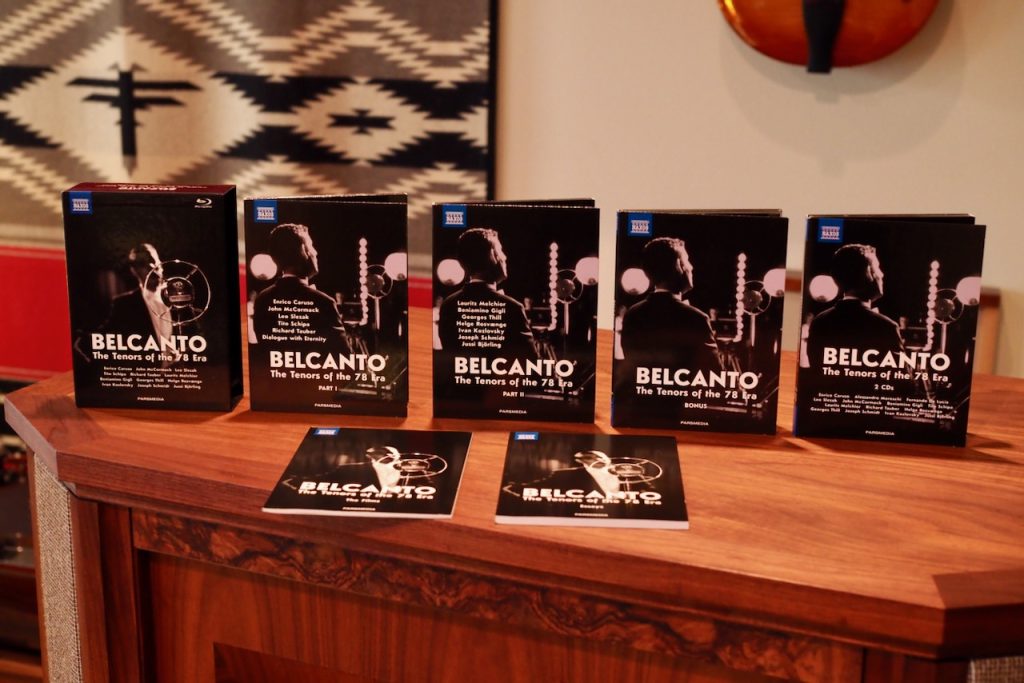
Bel Canto, The Tenors of the 78 Era
This box set includes two Blu-ray discs of early movie footage, a DVD disc of additional movie footage, two CDs of recorded bel canto performances from the 78 eras, a book that documents the 13 part film series, and another book with essays about the music, artists, and techniques of bel canto.
I bought my Bel Canto, The Tenors of the 78 Era box set from L'Atelier Grigorian in Canada HERE.
I am just getting started at working my way through this box set, and it is phenomenally good. I highly recommend it to those of you who want to expand your musical horizons into the world of opera and acoustic and electric era recordings.

My vintage Altec A5s based audio-visual system.
I've been watching the Part I Blu-ray disc in my vintage Altec A5 Voice of the Theatre loudspeakers based audio-visual system, and have been blown away at the incredible footage, music, and interviews in this series.
At the moment, I have the Audio Note (UK) Meishu Phono Silver Tonmeister 300B SET integrated amplifier paired with my vintage Altec A5 Voice of the Theatre loudspeakers, and the combination of those classic A5 loudspeakers with 300B amplification is to die for!
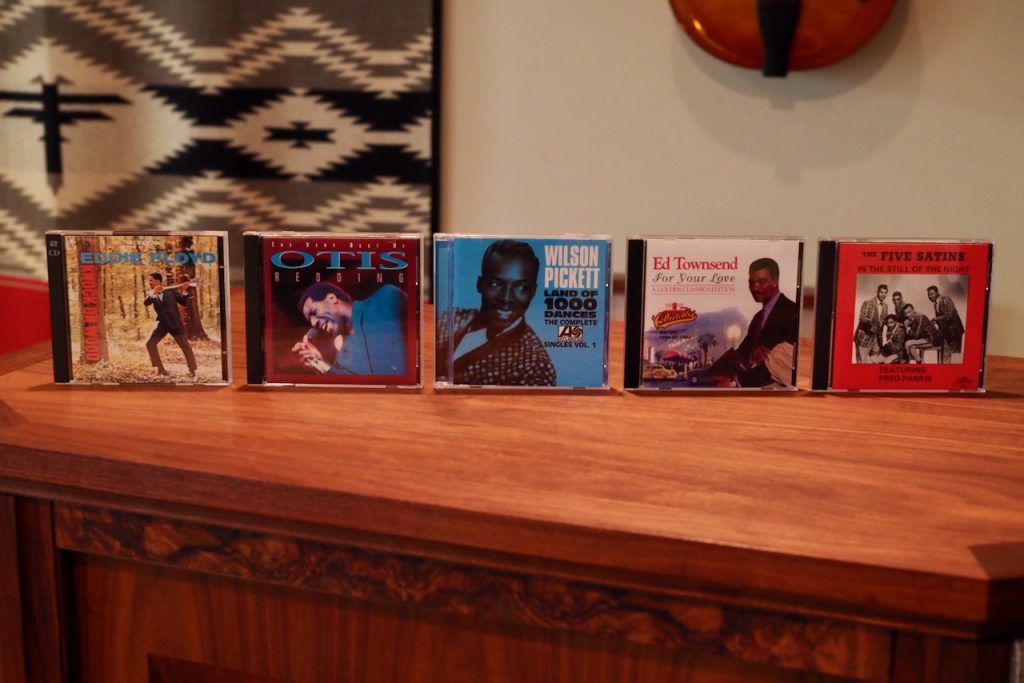
Ear training with David Gitlen.
My friend and guitar teacher, David Gitlen, has been working with me on ear training in order to better develop my musical perceptions as I listen to music.
We've started my ear training with the rhythm & blues music of Eddie Floyd, Otis Redding, Wilson Pickett, Ed Townsend, and Fred Parris.
I haven't really listened to rhythm & blues music much in the past, so listening to these albums have been fun listening experiences for me, and I have begun to appreciate the musical artistry of rhythm & blues music to a much greater extent during my ear training sessions.
Here's how the ear training works: With no sheet music or fake books to guide me in playing the song on my guitar, the goal is to develop my hearing acuity for what's going on in the music. It's challenging but fun, and I'm learning to hear better.
As I play a song on the CD player, I first try to figure out by ear what key the song is in. I start with the sixth and fifth strings of my guitar, and go around the circle of fifths until I can pick out the root tones of the initial chords of the song, which gives me the key of the song.
Once I have identified the key of the song, then I work on figuring out the chord progressions for the song by ear. Is it a I IV V, I V IV, I VI II V, or I VI IV V, etc., chord progression? Each major, minor, and seventh chord has its own distinctive sound quality in the song, and the goal is to match up what I'm hearing from the CD to what I'm playing on the guitar. That's challenging for me at this point in my ear training, but I'm making progress.
Once I have the chord changes of the verses, choruses, bridge, etc., figured out, and the number of beats for each chord in the progressions, then I can focus on putting it all together so I can learn 'the feel' of the song, so I can play it on my guitar.

Learning the 'feel' of rhythm & blues.
After I work through a song, David goes through the song with me to find out how well I've got it figured out, and points me in the right direction when I get things wrong.
This has really helped me to appreciate what's going on in the music, and hearing it in a deeper way. Slowly, my hearing perception is improving, which is exciting both for playing the guitar and for listening to music on the hifi!
David's ear training exercises have also helped me understand better how the performance envelope of different audio systems makes it easier or harder to pick out what's going on in the music.
I wanted to mention this ear training, as a lot of the music listening we do is a learned skill, whether we realize it or not.
I've learned to listen to music in different ways as time goes on.
When I first started listening to music, I just let the music flow over me as an emotional listening experience. I experienced the meaning of the lyrics, the feel of the music, and the music I listened to made me feel happy, sad, and excited, depending on the artists' intent.
When I got interested in high-fidelity audio, then I began to think more about sound quality and learn about that.
I learned about listening for the visuospatial traits of the stereo period of the magnetic recording era, like soundstage and imaging, for example, which were specific to the audiophile sector of high-fidelity audio.
As my listening skills continued to develop I started listening more for musicality traits like timbre, tone color, tempo, beat, dynamics, and so forth - the elements that make up the music itself.
Now I'm learning new listening skills that relate to the fidelity of the recording methods from the different eras of the recording arts, how they affect audio system performance, and how to optimize system performance across those recording styles.
For example, monaural recordings from the acoustic, electric, and early magnetic eras of recording take a different set of learned listening - and system voicing - skills than do those recordings from the stereo period of the magnetic era (e.g. the visuospatial - and other - traits are different, and less relevant).
The monaural recordings forced me as a listener to focus more on the music itself, which is sort of a return to my musical 'first love' of how the music made me feel from an emotional standpoint, rather than how it sounds, and how much I enjoy listening to music as a sensual experience in itself.
Whether my ear training is about listening for the emotional content of music, or listening for visuospatial traits in music, or listening for musicality traits, or listening for the style of recording methods in the different recording eras, or listening like a musician to figure out what is going on in the music by ear, it all adds up to provide a deeper and more expansive listening experience.
It's fun and rewarding to expand one's listening skills!
I consider all of those listening skills to be part of my aural listening palette, skills that help take me deeper into the enjoyment and appreciation of music in our vast recorded music canon.
Audio Note (UK)
It really has been a truly rewarding experience meeting Peter Qvortrup, and visiting him and all of the Audio Note (UK) family in Brighton, England.
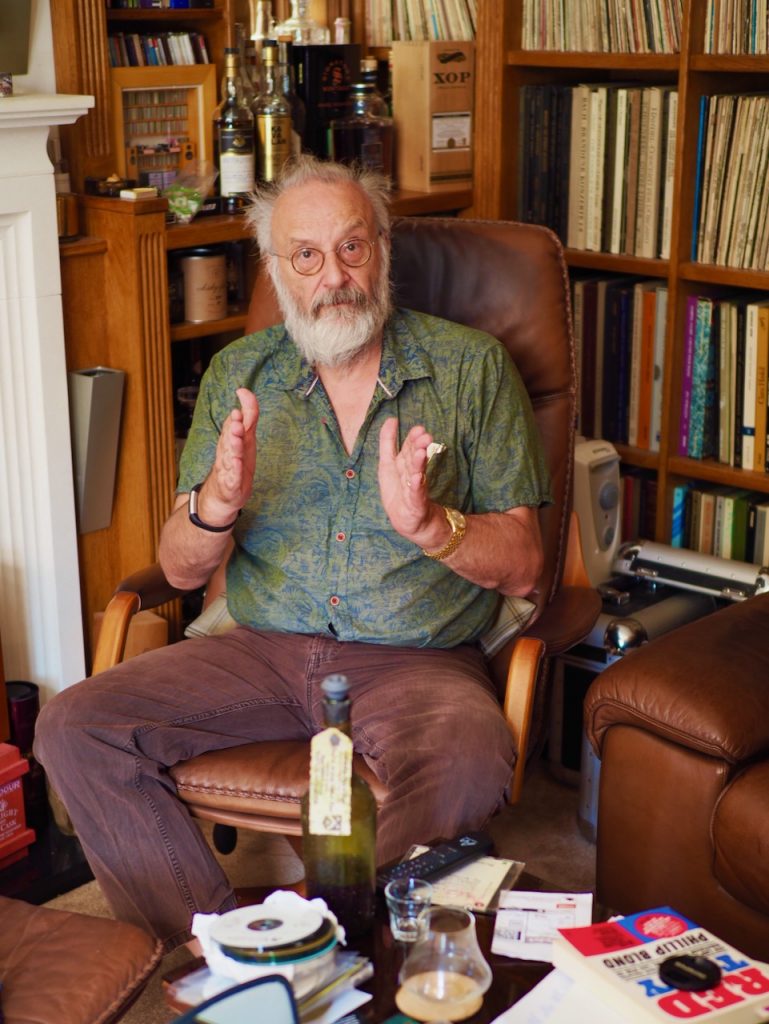
Peter Qvortrup (Audio Note (UK)) in his home listening room.
Learning about Peter's ideas for audio performance, his design focus for audio equipment, and being introduced to new music has been a real pleasure.
I've been listening to music with Peter's Audio Note (UK) components now for quite a while. I have immensely enjoyed the experience, and have been very impressed with their performance.
Here's a quick recap of the series of articles I've written about Audio Note (UK) components for Positive Feedback to introduce you to the Audio Note (UK) product lines and design focus:
The Audio Note UK Oto Phono SE Signature integrated amplifier (HERE).
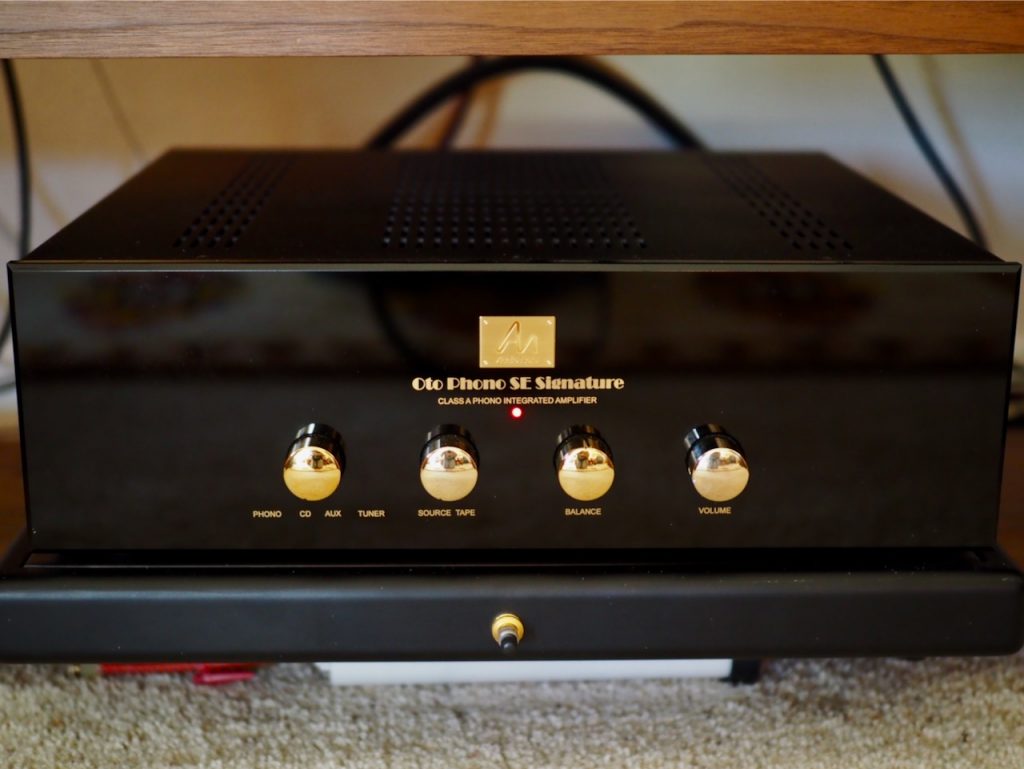
The Audio Note (UK) Oto Phono Signature integrated amplifier.
The Audio Note (UK) CD 2.1x/II Level Two Red Book CD player (HERE).
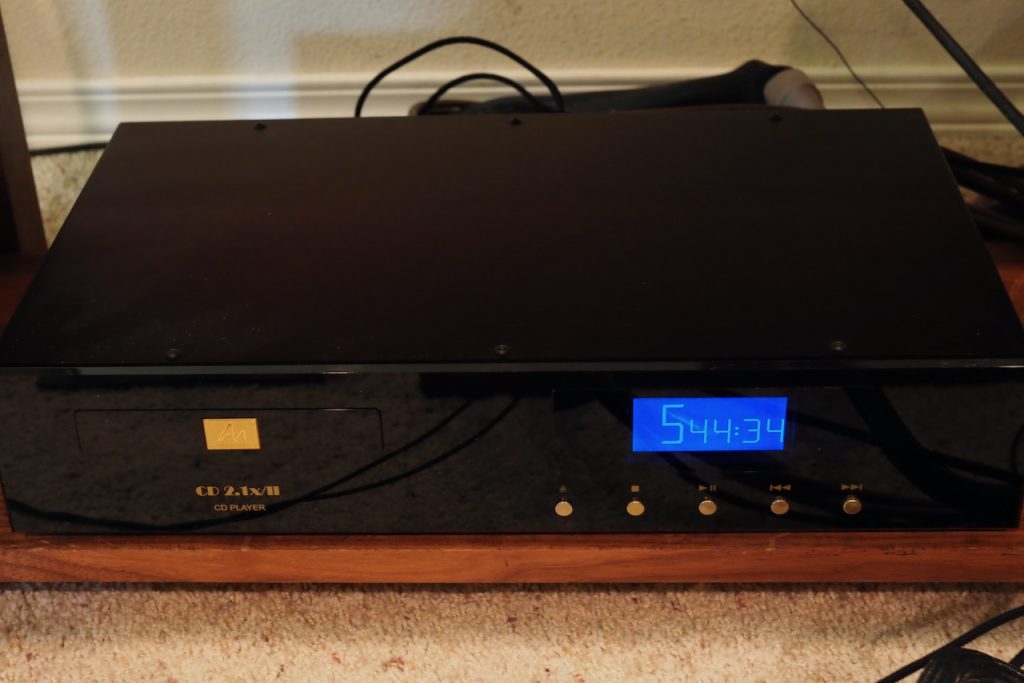
Audio Note (UK)CD 2.1x/II Red Book CD player.
The Audio Note (UK) AN-S4 step-up transformer, Io I MC phono cartridge, AN-V silver interconnect cables, and AN-SPe silver loudspeaker cables (HERE).
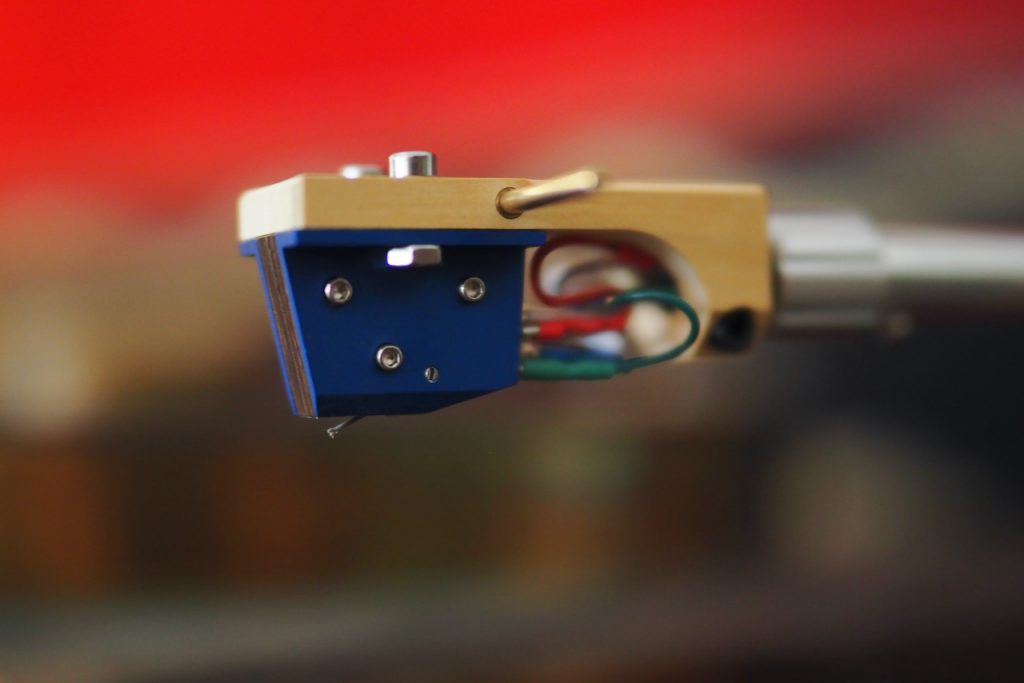
Audio Note (UK) Io I moving coil phonograph cartridge.
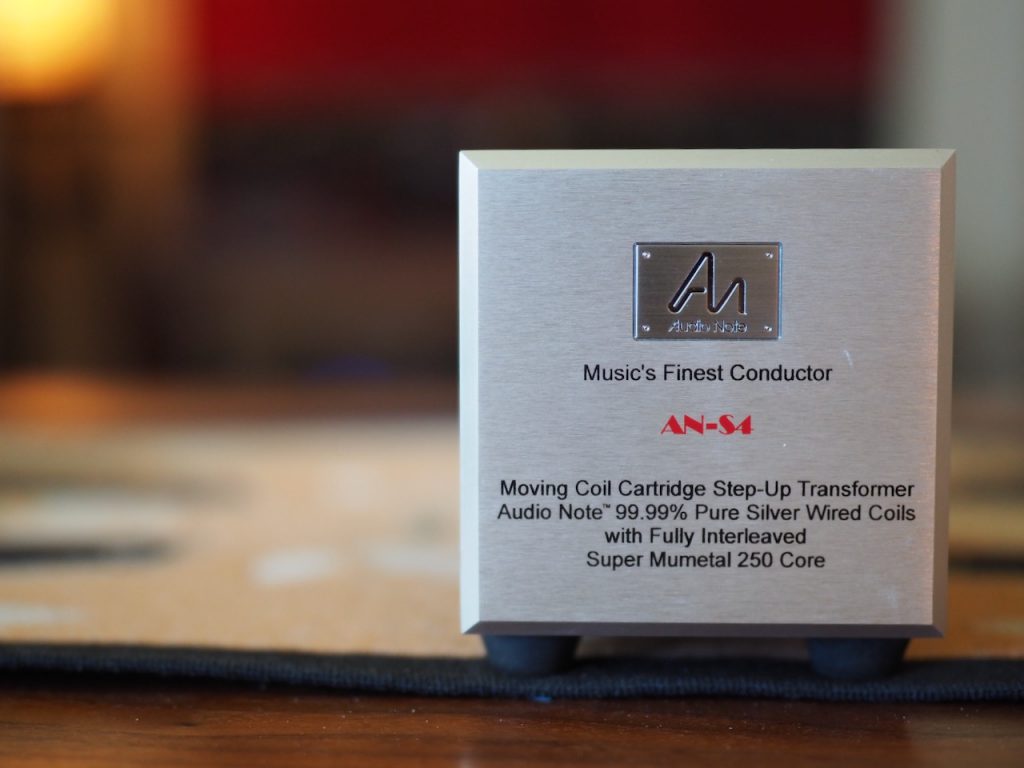
Audio Note (UK) AN-S4 step-up transformer (SUT).
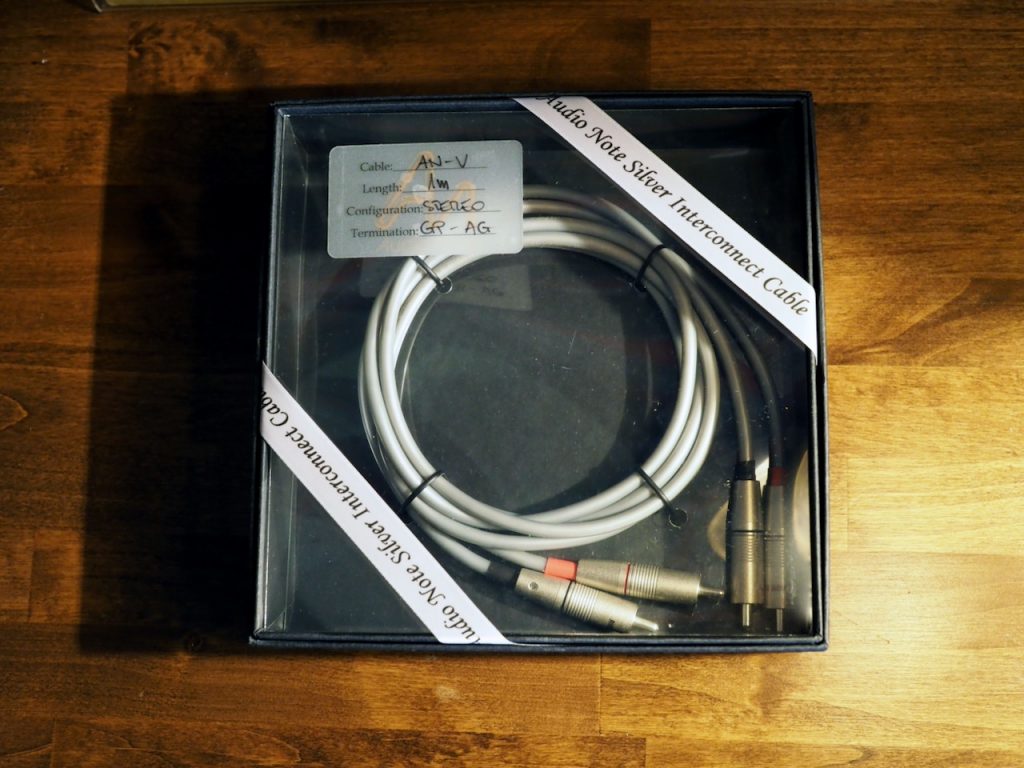
Audio Note (UK) AN-V silver interconnects.
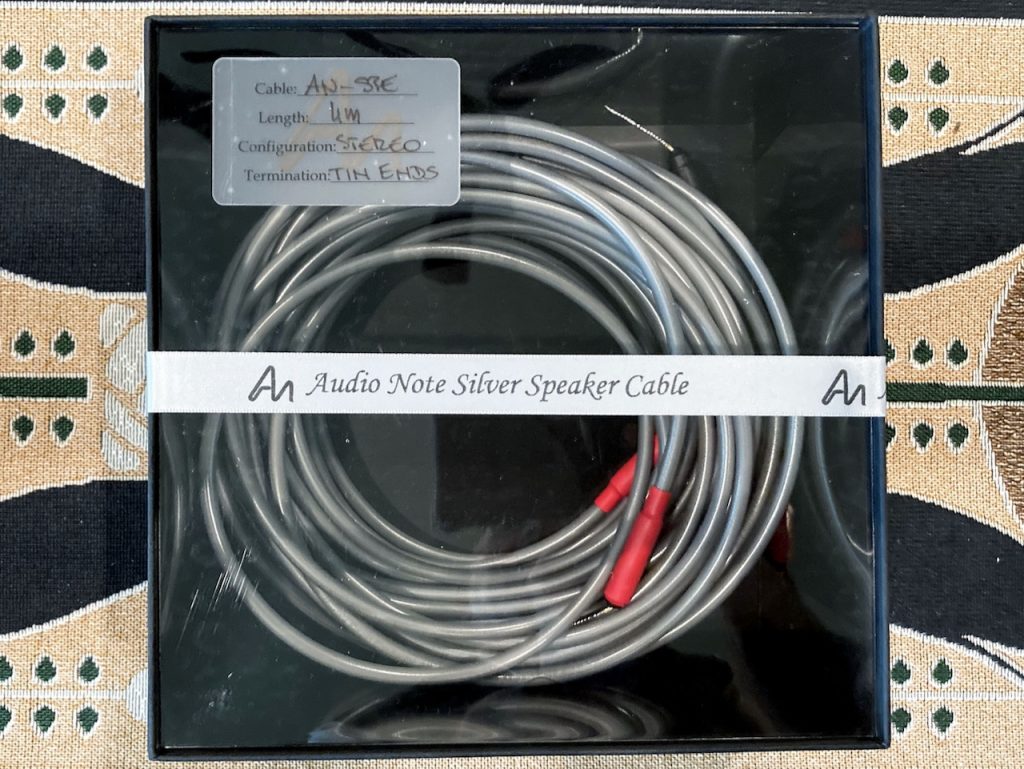
Audio Note (UK) AN-SPe silver loudspeaker cables.
The Audio Note (UK) CD 4.1x Level Three Red Book CD player (HERE).
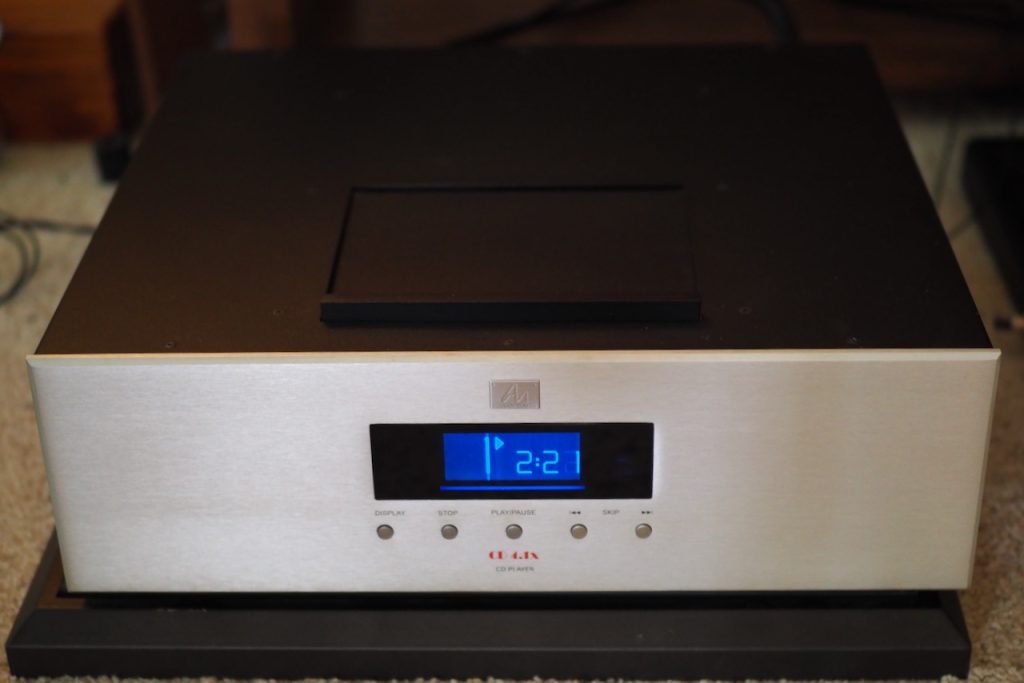
Audio Note (UK) CD 4.1x Level Three Red Book CD player.
I've also written a ton - too many to list here - of Jeff's Place articles about Peter and Audio Note (UK) that you can find by entering "Audio Note (UK)" into the search bar at the top of my main page (HERE). Lot's of good reading!
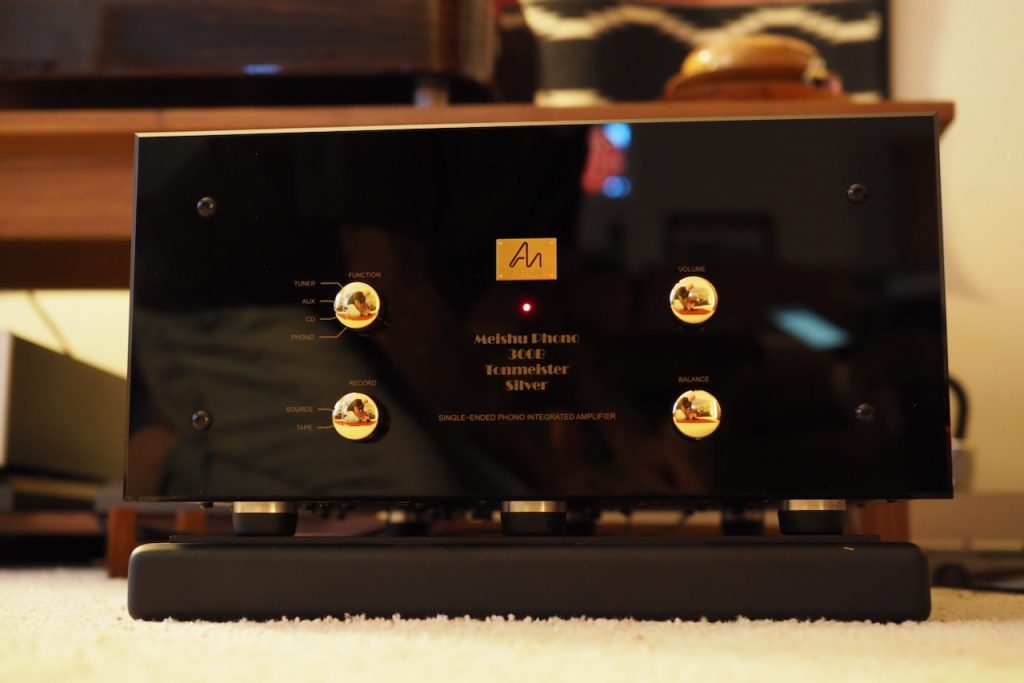
Audio Note (UK) Meishu Phono Silver Tonmeister 300B SET integrated amplifier.
I've got two more components to tell you about in this Audio Note (UK) series, the Level Three Audio Note (UK) 300B Meishu Phono Silver Tonmeister single-ended-triode integrated amplifier (photo above), and the Level Two Audio Note (UK) AN-K/SPe loudspeakers .
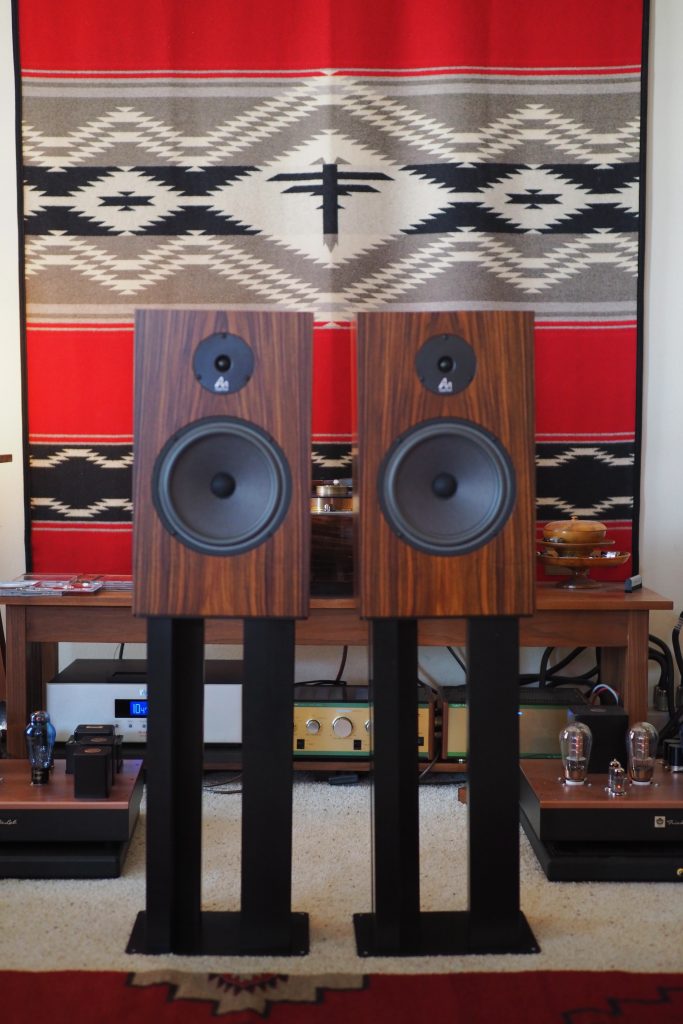
Audio Note (UK) AN-K/SPe loudspeakers sitting atop the AN-J stands.
I'm working on the Positive Feedback feature article now about the Level Three Audio Note (UK) 300B Meishu Phono Silver Tonmeister single-ended-triode integrated amplifier, so expect to see that coming next.
Next up after that is the Positive Feedback feature article about the Audio Note (UK) Level Two AN-K/SPe loudspeakers which I've got running-in in my guitar room audio system.
I hope you've enjoyed reading and learning about Peter Qvortrup and his high-fidelity Audio Note (UK) audio components as much as I have enjoyed telling you the about them.
Peter, his ideas about audio performance, and his Audio Note (UK) components have really expanded my perceptions about listening to music, and the performance attributes of high-fidelity audio equipment that makes the music come alive in listening sessions.
As a result of my interactions with Peter, I've learned new listening skills, and greatly expanded my appreciation for all of the music in our recorded music canon, which will provide listening thrills for years to come.
As always, thanks for stopping by, and may the tone be with you!





























